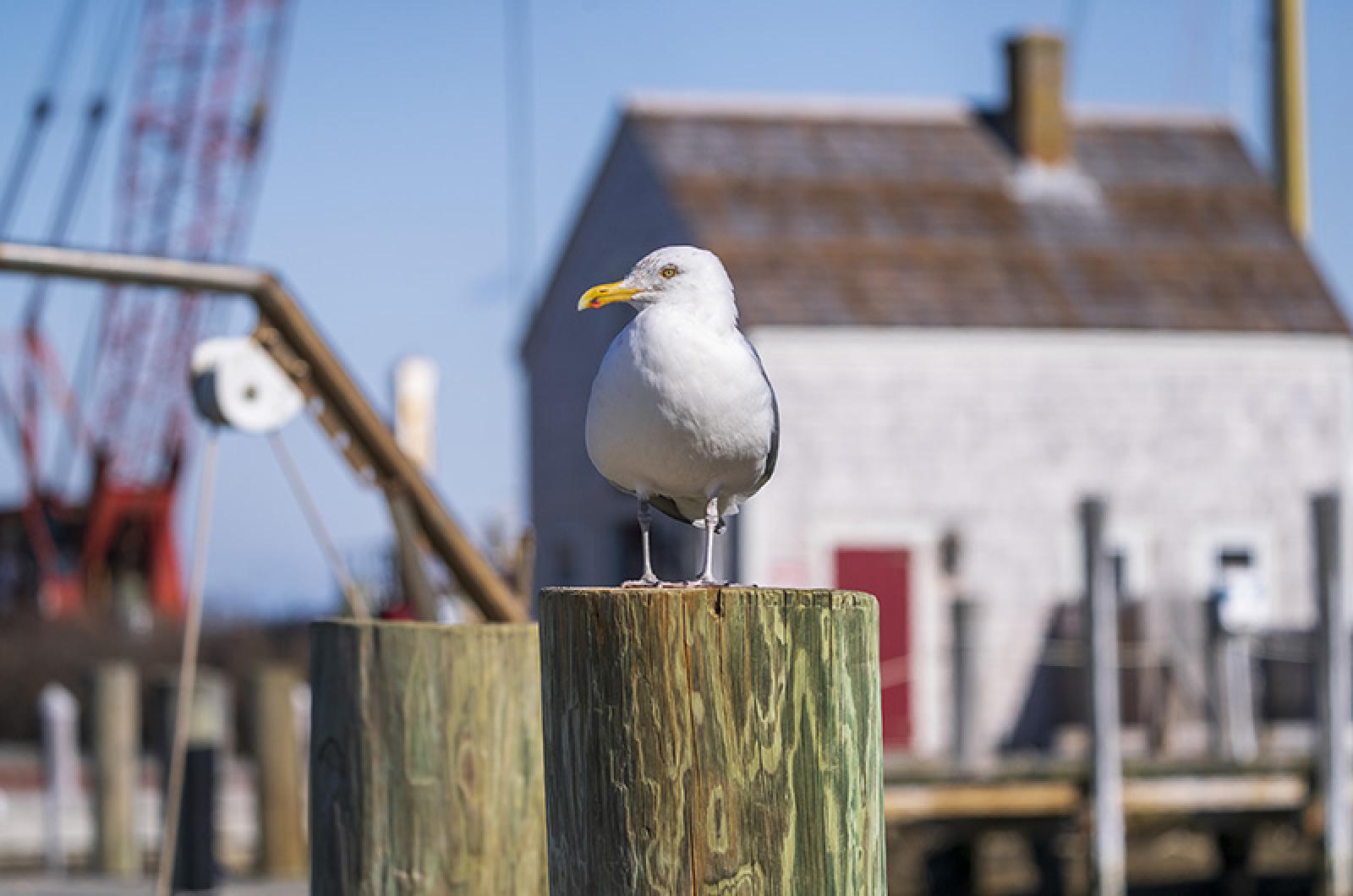From the May 5, 1933 edition of the Gazette:
The latest story of the sea gulls of Sengekontacket is called the best of most of those who have heard it, and is related by an Islander whose name will be supplied to any who inquire.
It was but a few days ago that this Islander rode over the Oak Bluffs-Edgartown road and slowed up his car to watch the fishing gulls as they dove, seized a shellfish, dropped it on the hard road to crush the shell, and then landed to enjoy the feast.
One gull rose from the water with a blue-nosed crab, the shell of which is recognized as being very tough and difficult to break. Twice the bird soared aloft and dropped the crustacean, while the motorist slowed almost to a stop, to watch. But the crab shell did not crack. On alighting for the second time, and observing its failure to break the shell, the gull glanced toward the slowly approaching car, gauged its course, and then dragged the crab about three feet, leaving it directly in the path of one of the car wheels. Then, stepping out on the side of the highway, the bird waited until the car had passed.
The driver, sensing the bird’s desire, did not alter his course, but stopping a few feet past, observed that the crab was crushed and that the gull was making a meal from it.
•
Summer fish have arrived in Island waters, although not in large numbers. Traps hauled in Menemsha Bight for the first time on Tuesday, contained a barrel of mackerel and 450 dogfish. The haul was practically the same on Wednesday. These Bight traps are operated by Campbell and Flanders, who set a third trap off the Brickyard on Wednesday.
•
Anyone hearing the name of Goose Island mentioned might justly picture some low, sedgy plot of land located in a pond. Such places are likely to be frequented by wild geese, and the supposition would be a natural one. But Goose Island is not an island at all, at the present day, and there is no one living who can recall when it was an island. Goose Island is a tiny hillock of loam, overgrown to some extent with brush and bayberry trees. It is grassy and appears to be a very substantial little mound of earth, though surrounded by beach sand, with the surf of Vineyard Sound beating against one side, while the waters of Paint Mill Pond wash the other.
This little hillock is one of the marvels of the quaint and picturesque estate of George D. Eustis, Hollyholm, in Chilmark, and the whys and wherefores of its peculiar name have been entirely forgotten. Tradition remains, bearing upon this particular spot, which may have been and probably was an island at some time, when possibly the brook feeding the pond divided, cutting around two sides of the hill.
The estate was originally the home of Stephen Skiff, whose descendants inherited the property for several generations, and it was through the activities of one of these, probably Vinal Skiff, that Goose Island is said to have diminished in size.
Something over one hundred years ago, as the story has been told, this little hillock was a point of land, extending seaward and containing some forty acres. It was covered with a heavy growth of pine timber. The owner decided to cut this timber, probably for building purposes, as pine was employed for house framing at about that period. Accordingly, he chopped down the trees and hauled them away. The light, sandy soil of the point, lacking the support of the great pine roots, which were killed by the cutting, blew and washed away, leaving only the rocky foundation of the point in the form of a ledge that extends out into the sound, and the shore end, now known as Goose Island.
Assuming this story to be true, the shore line at this point must have presented a very different appearance in those days from what it is at the present time. Gunning point rises high and steep with its rock-studded sand cliffs on the western side of the little bight. Deep water with good holding ground lies almost beneath this cliff, which has sheltered fishermen for generations in westerly storms. But the eastern side of the bight lies open to all weather. With the long, wooded point stretching out where the ledge now lies, there would have been a veritable fjord lying between, sheltered from all but direct northerly winds, one of the “dodge holes” of the Island coast, by means of which the fishermen of the Vineyard vexed the British patrols during the Revolutionary period.
Of these many a story has been told which might have some bearing on this very spot. Many a small boat sailed at night, bound for the mainland laden with farm produce or wool, to exchange for articles needed by the Islanders. And they were often pursued but seldom captured on their return trips because of these sheltered spots into which they sailed and vanished. The home of fishermen-farmers and of master mariners in generations past, Hollyholm may well have been the scene of exciting chases and miraculous escapes in which Goose Island played well its part.
Compiled by Hilary Wallcox







Comments
Comment policy »